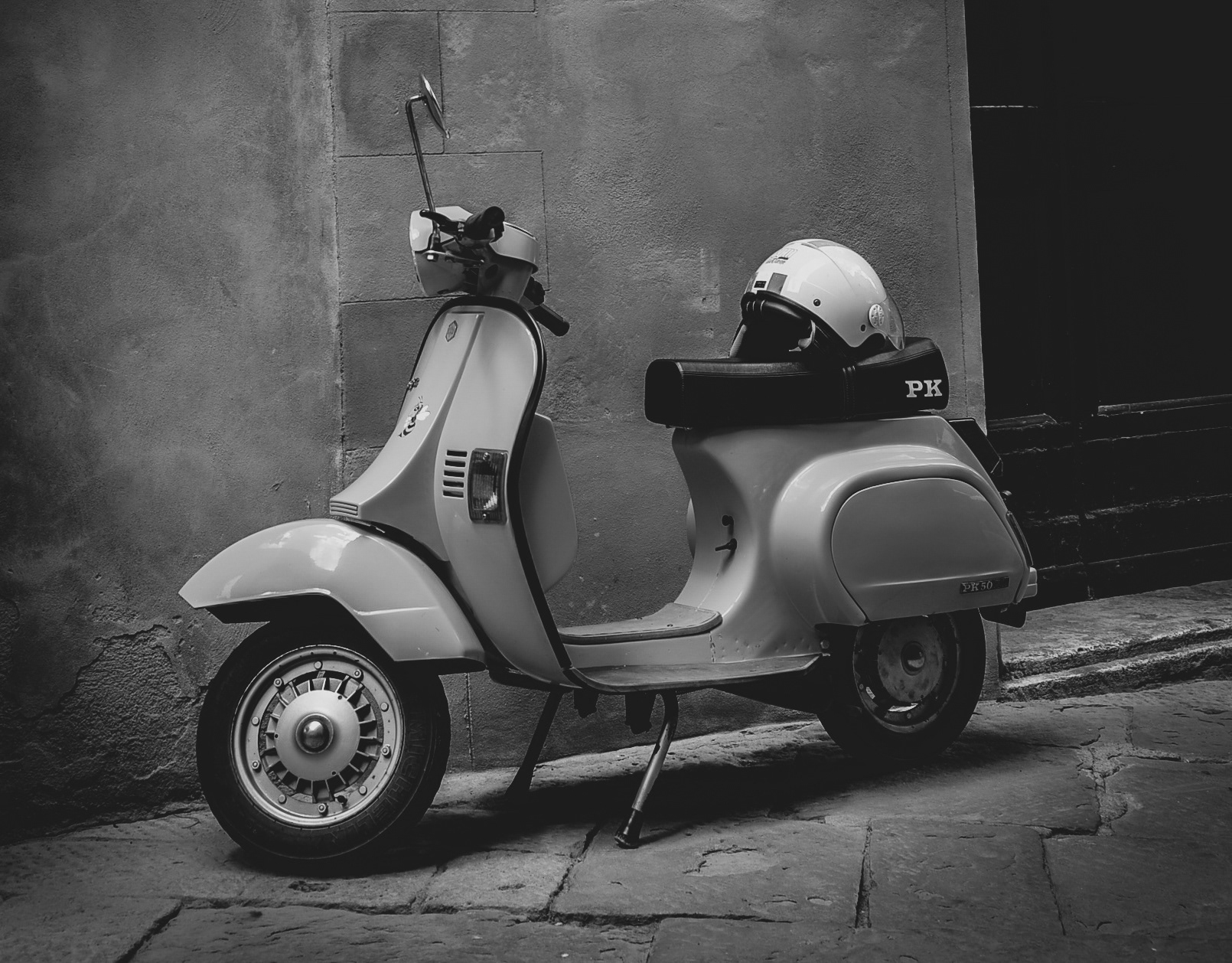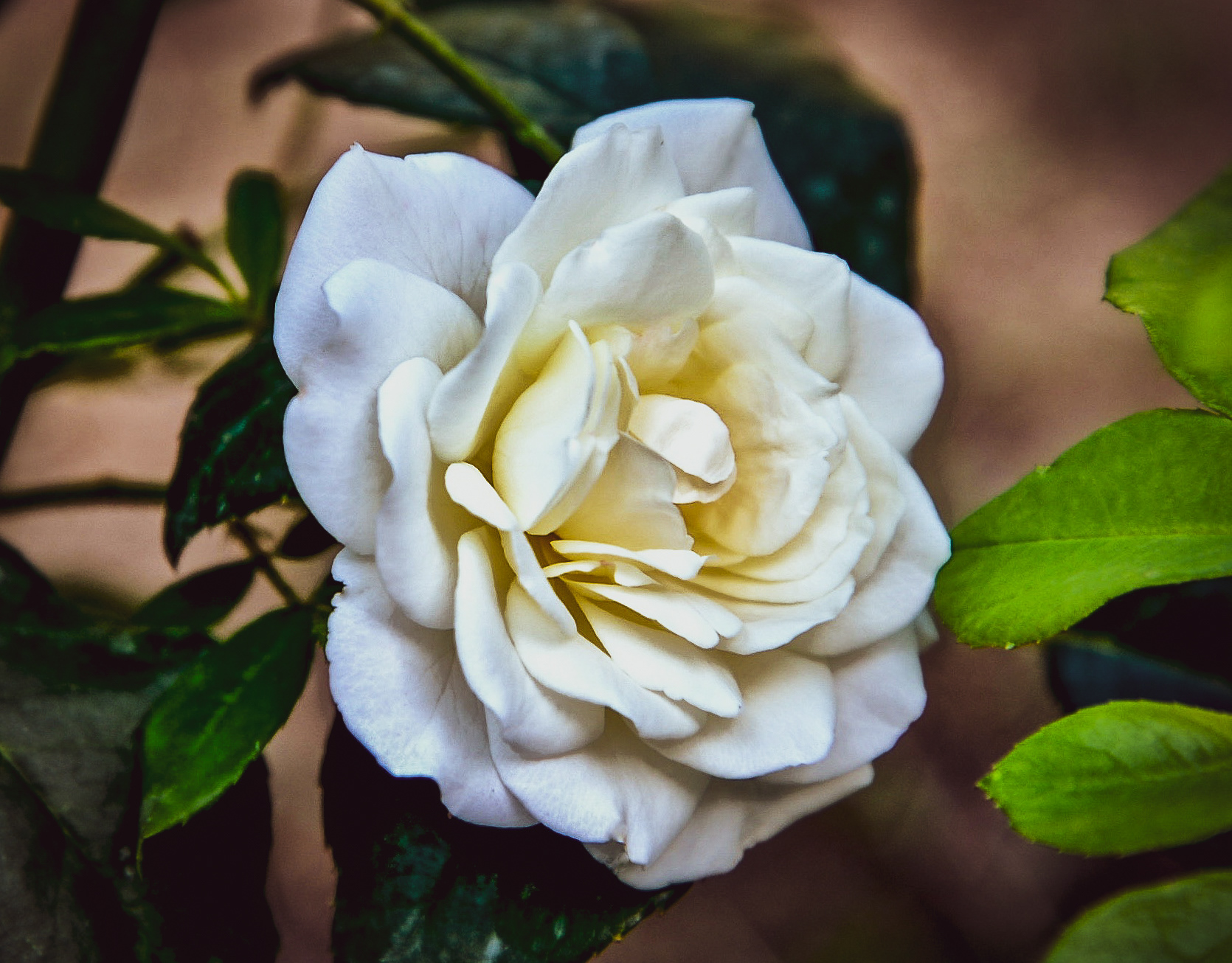By His Wounds We Are Healed
“Yet it was our pain that he bore, our sufferings he endured. We thought of him as stricken, struck down by God and afflicted, But he was pierced for our sins, crushed for our iniquity. He bore the punishment that makes us whole, by his wounds we were healed.” - Isaiah 53:4-5
Golden Sunset Reflections
“The time will soon be here when my grandchild will long for the cry of a loon, the flash of a salmon, the whisper of spruce needles, or the screech of an eagle.
But he will not make friends with any of these creatures and when his heart aches with longing, he will curse me.
Have I done all to keep the air fresh?
Have I cared enough about the water?
Have I left the eagle to soar in freedom?
Have I done everything I could to earn my grandchild's fondness?”
— Chief Dan George, Tsleil-Waututh (1899 – 1981)
Almost Never Happened
It is the walkoff home run of live action sports shots. Carlton Fisk is waving the ball fair. He’s perfectly in focus, perfectly framed slightly to the right as he drifts left toward first base. As the ball hits the fair pole, he jumps, Fred Lynn in the on-deck circle behind him jumps, and the dozens of fans in the shot behind him jump.
It is one of the most famous and enduring images in American sports history. More important than that, it forever changed the way television covers baseball.
And it almost never happened.
The story behind it is one of the great—and little-known—tales in Fenway Park’s 100-year history.
In 1975, cameramen did not follow players’ reactions. They followed the ball. Reaction shots like that one, so ubiquitous today, were largely unheard of. Then Fisk, the Red Sox catcher, stepped to the plate in the 12th inning of Game 6 of the World Series. NBC cameraman Lou Gerard, stationed in the Fenway scoreboard and assigned to track the ball wherever Fisk hit it, had a problem.
A big, hairy, ugly, nasty problem.
“There were some rats running around,” he says. “With Fisk coming up, Harry Coyle, who was the director at the time, he told me, ‘Lou, you have to follow the ball if he hits it.’ I said, ‘Harry, I can’t, I’ve got a rat on my leg that’s as big as a cat. It’s staring me in the face. I’m blocked by a piece of metal on my right.’ So he said, ‘What are we going to do?’ I said, ‘How about if we stay with Fisk, see what happens?’ ”
“Harry says, ‘OK, we’ll try that,’” Gerard says.
With those four words, Coyle and Gerard introduced a new way of televising America’s pastime.
Andy Warhol, born Andrew Warhola; August 6, 1928 – February 22, 1987) was an American artist, film director, and producer who was a leading figure in the visual art movement known as pop art. His works explore the relationship between artistic expression, advertising, and celebrity culture that flourished by the 1960s, and span a variety of media, including painting, silkscreening, photography, film, and sculpture. Some of his best known works include the silkscreen paintings Campbell's Soup Cans (1962) and Marilyn Diptych (1962), the experimental films Empire (1964) and Chelsea Girls (1966), and the multimedia events known as the Exploding Plastic Inevitable (1966–67).
New York City's Museum of Modern Art hosted a Symposium on pop art in December 1962 during which artists such as Warhol were attacked for "capitulating" to consumerism. Critics were scandalized by Warhol's open embrace of market culture. This symposium set the tone for Warhol's reception.
Born and raised in Pittsburgh, Warhol initially pursued a successful career as a commercial illustrator. After exhibiting his work in several galleries in the late 1950s, he began to receive recognition as an influential and controversial artist. His New York studio, The Factory, became a well-known gathering place that brought together distinguished intellectuals, drag queens, playwrights, Bohemian street people, Hollywood celebrities, and wealthy patrons. He promoted a collection of personalities known as Warhol superstars, and is credited with inspiring the widely used expression "15 minutes of fame".
In the late 1960s he managed and produced the experimental rock band The Velvet Underground and founded Interview magazine. He authored numerous books, including The Philosophy of Andy Warhol and Popism: The Warhol Sixties. He lived openly as a gay man before the gay liberation movement. After gallbladder surgery, Warhol died of cardiac arrhythmia in February 1987 at the age of 58.
The Art Of Imperfection
Wabi-Sabi: The Art Of Imperfection
According to Japanese legend, a young man named Sen no Rikyu sought to learn the elaborate set of customs known as the Way of Tea. He went to tea-master Takeeno Joo, who tested the younger man by asking him to tend the garden. Rikyu cleaned up debris and raked the ground until it was perfect, then scrutinized the immaculate garden. Before presenting his work to the master, he shook a cherry tree, causing a few flowers to spill randomly onto the ground.
To this day, the Japanese revere Rikyu as one who understood to his very core a deep cultural thread known as wabi-sabi. Emerging in the 15th century as a reaction to the prevailing aesthetic of lavishness, ornamentation, and rich materials, wabi-sabi is the art of finding beauty in imperfection and profundity in earthiness, of revering authenticity above all. In Japan, the concept is now so deeply ingrained that it’s difficult to explain to Westerners; no direct translation exists.
Broadly, wabi-sabi is everything that today’s sleek, mass-produced, technology-saturated culture isn’t. It’s flea markets, not shopping malls; aged wood, not swank floor coverings; one single morning glory, not a dozen red roses. Wabi-sabi understands the tender, raw beauty of a gray December landscape and the aching elegance of an abandoned building or shed. It celebrates cracks and crevices and rot and all the other marks that time and weather and use leave behind. To discover wabi-sabi is to see the singular beauty in something that may first look decrepit and ugly.
Wabi-sabi reminds us that we are all transient beings on this planet—that our bodies, as well as the material world around us, are in the process of returning to dust. Nature’s cycles of growth, decay, and erosion are embodied in frayed edges, rust, liver spots. Through wabi-sabi, we learn to embrace both the glory and the melancholy found in these marks of passing time.
The Little Things In Life
The Little Things In Life
by Sarah Jury
by Sarah Jury
It's the little things in life that can change the way you feel,
like a kiss on the cheek, a flower in your hair or going for a meal
They say money makes the world go round, and money can buy you some amazing things
but it only takes a smile to wake me up in the winter mornings
Like a ladybird cautious to land,
eventually it will flutter down and reach for your hand
Let it guide you through the woods,
stone and prickle and wolves in hoods.
Till at last you taste the sun,
you need not worry about what's to come.
Its the simple things in life that matter the most,
sugar in your tea, jam and butter on your toast
Don't be afraid to take a chance,
Show yourself to me, laugh and dance
Be free to dream, love and kiss
There isn't a single part of you that I would want to miss.
like a kiss on the cheek, a flower in your hair or going for a meal
They say money makes the world go round, and money can buy you some amazing things
but it only takes a smile to wake me up in the winter mornings
Like a ladybird cautious to land,
eventually it will flutter down and reach for your hand
Let it guide you through the woods,
stone and prickle and wolves in hoods.
Till at last you taste the sun,
you need not worry about what's to come.
Its the simple things in life that matter the most,
sugar in your tea, jam and butter on your toast
Don't be afraid to take a chance,
Show yourself to me, laugh and dance
Be free to dream, love and kiss
There isn't a single part of you that I would want to miss.
The Coronation Of The Virgin
The coronation of the Virgin, by Antoni Gaudi, Sagrada Familia, Barcellona Spain, is on the Nativity façade that is dedicated to the birth of Christ and where Gaudi expressed most of his influence in. There is also a Cypress Tree located at the top symbolizing the tree of life. The sculptures are right on the threshold of this great arch of palm fronds that covers them and, therefore, are a bit exposed. They are roughly 20 meters off the ground and show the figure of Christ just before he puts a crown on his mother’s lowered head. From behind, we can see the back of the throne where she sits, finished with two huge spheres. On either side, the witnesses to the scene: Saint Joseph on one side and a shepherd from the crèche on the other, representing the Holy Family’s first friends, the humblest of people.
"God's temple in heaven was opened,
and the ark of his covenant could be seen in the temple.
A great sign appeared in the sky, a woman clothed with the sun,
with the moon under her feet,
and on her head a crown of twelve stars.
She was with child and wailed aloud in pain as she labored to give birth.
and the ark of his covenant could be seen in the temple.
A great sign appeared in the sky, a woman clothed with the sun,
with the moon under her feet,
and on her head a crown of twelve stars.
She was with child and wailed aloud in pain as she labored to give birth.
Then another sign appeared in the sky;
it was a huge red dragon, with seven heads and ten horns,
and on its heads were seven diadems.
Its tail swept away a third of the stars in the sky
and hurled them down to the earth.
it was a huge red dragon, with seven heads and ten horns,
and on its heads were seven diadems.
Its tail swept away a third of the stars in the sky
and hurled them down to the earth.
Then the dragon stood before the woman about to give birth,
to devour her child when she gave birth.
She gave birth to a son, a male child,
destined to rule all the nations with an iron rod.
Her child was caught up to God and his throne.
The woman herself fled into the desert
where she had a place prepared by God.
Then I heard a loud voice in heaven say:
“Now have salvation and power come,
and the Kingdom of our God
and the authority of his Anointed One.”
to devour her child when she gave birth.
She gave birth to a son, a male child,
destined to rule all the nations with an iron rod.
Her child was caught up to God and his throne.
The woman herself fled into the desert
where she had a place prepared by God.
Then I heard a loud voice in heaven say:
“Now have salvation and power come,
and the Kingdom of our God
and the authority of his Anointed One.”
- Rev 11:19a; 12:1-6a; 10a,b
This spectacular car is none other than the 1913 French GP and 1914 Indy 500 winner - a 1913 Delage, type Y factory works racer. Louis Delage (1874-1947) left Renault to open his own company in 1905. Always passionate about racing, Delage hired a new engineer in 1910 - Arthur Michelat, a Angers graduate (France's Army Heavy Artillery School). Michelat is credited with designing the type Y racers of 1913. The cars (4 type Y racers are thought to have been built) are equipped with a 4-valves per cylinder, 4-cylinder engine producing roughly 130hp.
The 4th International 500-Mile Sweepstakes Race was held at the Indianapolis Motor Speedway on Saturday, May 30, 1914. The 1914 Indianapolis 500 was a star studded event with Duray moving over to drive for Peugeot (the other Peugeot being driven by Goux). Rene Thomas and Albert Guyot would drive for Delage and hometown favorites Oldfield, Wishart, and Rickenbacker would drive for Stutz, Mercer, and Duesenberg respectively. With W.F. Bradley as team manager yet again, the number 16 Delage driven by Thomas would win the event.
René Thomas (March 7, 1886 – September 23, 1975) was a French motor racing champion. Thomas was also a pioneer aviator. A leading driver in his native France, René Thomas traveled to the United States to compete in the Indianapolis 500 on four occasions. He won the 1914 Indianapolis 500 on his inaugural try driving a Delage.
On May 28, 1973, he returned to Indianapolis to drive his winning Delage in a series of parade laps, prior to the start of the 1973 Indianapolis 500. Although he did not drive the car himself, he did sit in the seat where the riding mechanic would sit. He died on September 23, 1975 in Paris, France at age 89.
The New Colossus
Not like the brazen giant of Greek fame,
With conquering limbs astride from land to land;
Here at our sea-washed, sunset gates shall stand
A mighty woman with a torch, whose flame
Is the imprisoned lightning, and her name
Mother of Exiles. From her beacon-hand
Glows world-wide welcome; her mild eyes command
The air-bridged harbor that twin cities frame.
“Keep, ancient lands, your storied pomp!” cries she
With silent lips. “Give me your tired, your poor,
Your huddled masses yearning to breathe free,
The wretched refuse of your teeming shore.
Send these, the homeless, tempest-tossed to me,
I lift my lamp beside the golden door!”
With conquering limbs astride from land to land;
Here at our sea-washed, sunset gates shall stand
A mighty woman with a torch, whose flame
Is the imprisoned lightning, and her name
Mother of Exiles. From her beacon-hand
Glows world-wide welcome; her mild eyes command
The air-bridged harbor that twin cities frame.
“Keep, ancient lands, your storied pomp!” cries she
With silent lips. “Give me your tired, your poor,
Your huddled masses yearning to breathe free,
The wretched refuse of your teeming shore.
Send these, the homeless, tempest-tossed to me,
I lift my lamp beside the golden door!”
Stone Of Hope
“I’d like for somebody to say that Martin Luther King Jr. tried to love somebody,” he said. “I want you to be able to say that day that I did try to feed the hungry. I want you to be able to say that day that I did try in my life to clothe those who were naked . . . I want you to say that I tried to love and serve humanity. Yes, if you want to say that I was a drum major, say that I was a drum major for justice. Say that I was a drum major for peace. I was a drum major for righteousness. And all of the other shallow things will not matter. I won't have any money to leave behind. I won't have the fine and luxurious things of life to leave behind. But I just want to leave a committed life behind. And that's all I want to say.”
Excerpt from "The Drum Major Instinct," Sermon Delivered at Ebenezer Baptist Church by Dr. Martin Luther King, Jr., February 4, 1968, Atlanta, Ga.
Am I Not Here
“Hear and let it penetrate your heart, my dear little son: let nothing discourage you, nothing depress you. Let nothing alter your heart or your countenance. Also do not fear any illness or trouble, anxiety or pain. Am I not here, who am your Mother? Are you not under my shadow and protection? Am I not your fountain of life? Are you not in the fold of my mantle, in the crossing of my arms? ... Is there anything else you need?” - Virgin Mary to St Juan Diego (1531)
Will You Remember Me
Remember
by Christina Rossetti (1830-1894)
by Christina Rossetti (1830-1894)
Remember me when I am gone away, Gone far away into the silent land; When you can no more hold me by the hand, nor I half turn to go yet turning stay. Remember me when no more day by day, you tell me of our future that you planned. Only remember me; you understand.
It will be late to counsel then or pray. Yet, if you should forget me for a while and afterwards remember, do not grieve. For if the darkness and corruption leave, a vestige of the thoughts that once I had. Better by far you should forget and smile; Than that you should remember and be sad.
Soul Searching
Bishop Frederic Baraga
Roman Catholic Priest and Bishop to the Ojibwe
Birth: June 29, 1797 Death: January 19, 1868
Roman Catholic Priest and Bishop to the Ojibwe
Birth: June 29, 1797 Death: January 19, 1868
Father Baraga was a missionary that lived and worked single-handedly with the Ojibwe natives between the years 1831 and 1868 in the regions of Lake Superior and Lake Michigan. During that timeframe he lived with the Ojibwe while helping them to understand the Catholic religion. He was known for his compassion and care, for being a zealous missionary and being there for the Ojibwe during one of the most challenging times in their life.
Due to his extensive travels on snowshoe in the early 1800's when car, train or roads were not found amongst the Ojibwe, he was given the nickname "The Snowshoe Priest". It was around this time that he founded several missions to aid in the care and concern for the Ojibwe people.
Father Baraga set the example what it truly means to be there for 'the least of these my brethren" caring for a people that were undergoing significant change, grief and through undue hardships. When the government was against them, he was there for them. When the fur traders took advantage of them, he helped to pick up the pieces. He was their physician, their counselor, their lawyer, their teacher and their friend and advocate in a time when few raised their voices in their favor. He taught them the principles of the Gospel of Christ not only through word, but through example.
He substantially helped them to be able to stay on their land through the purchase of lands and through peaceful negotiations that allowed them to bypass the regulations of the 1830 Indian Removal Act and the attempts on the part of the government to relocate them to a different region. When the land was secure and the threat of removal diminished Father Baraga would then deed the land over to the chief of the tribe.
In the late 1850's, there would be widespread press happening in that region that would bring the understandings of the Ojibwe people around the world. Eastman Johnson, a famous painter, would begin spending time on the western side of Lake Superior amongst the Ojibwe people making drawings of them which can still be seen in Museums such as the St. Louis County Historical Society in Duluth. Johann Kohl would be chaperoned by Father Baraga himself and would write his book called Kitchi Gami that would bring fame in Europe. Henry Longfellow would publish his famous poem "The Song of Hiawatha" in that same year. In his poem, amongst the Ojibwe words strewn throughout, his last chapter would speak of a missionary, with a cross around his neck, coming to visit the Ojibwe people.
Even in Father Baraga's last days of his life as he worked more regularly with the settlers of the region, he would say to those who asked who he was that he was "primarily an Indian missionary." After his stroke in a region that was far away from the Ojibwe he begged, despite opposition, to be brought back to his work with them. At the end of his life he gave away the last of his money to the Ojibwe people and for the missions that he had created among them.
"There was hardly a locality of the lake which is not connected with the history of his life, either because he built a chapel there, or wrote a pious book, or founded an Indian parish, or else underwent danger and adventures there, in which he felt that Heaven was protecting him."
-Johann Kohl, Kitchi Gami, 1855
-Johann Kohl, Kitchi Gami, 1855









